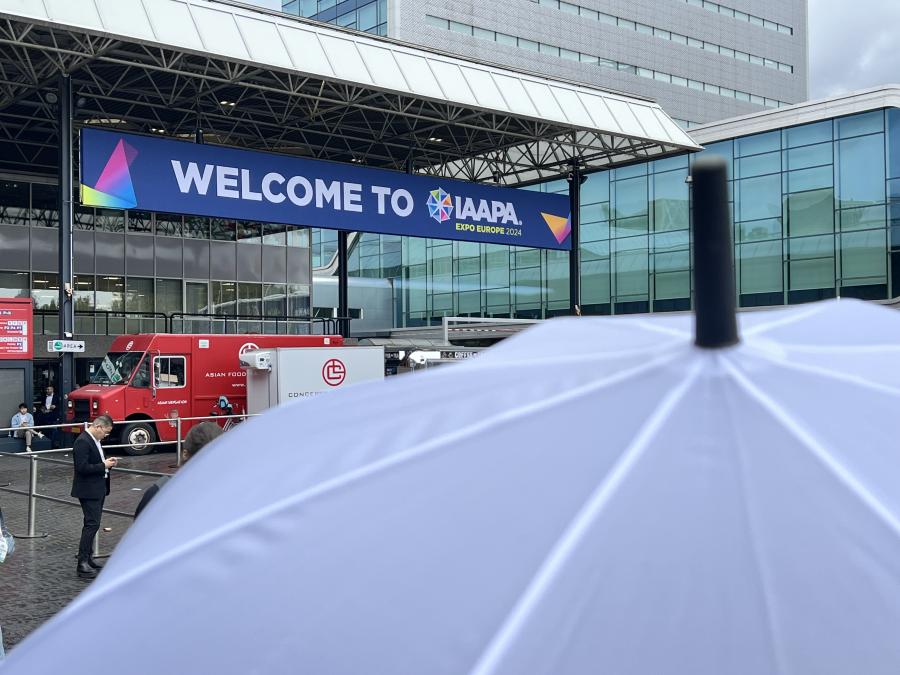While IAAPA Expo Europe 2024 carried on in Amsterdam, Hurricane Helene headed for Mexico and Florida. Floods have hit the United Kingdom, Poland, Czech Republic, Austria, Africa, and France in the past week. These events are a stark reminder of the growing impacts of climate change.
As the Earth warms, rainfall patterns change, and sea levels rise, the risk of heatwaves, floods, droughts, and fires rises. The global attractions industry must adapt.
“This is a coming reality,” Coen Bertens, owner of Coen Bertens Consultancy and former park director at Efteling, shares with the audience at IAAPA Expo Europe.
According to Lukas Metzger, head of park operations at Europa-Park, preparation is vital. Attractions leaders must look at the implications of extreme weather events for their guests and employees. Safety and comfort are critical factors to consider.
While high temperatures might be expected in the Middle East, Asia-Pacific, or the United States, Metzger explained that Europa-Park in Germany had seen temperatures reach and even exceed 40˚ C. In European attractions, park-wide air conditioning is not the norm. Parks must find ways to keep queuing guests and operations teams cool on hot days.
Europa-Park recently opened its new Croatia-themed area to acclaim. However, its brickwork retains and radiates heat, and the trees are not yet mature enough to provide enough shade. So, the team has added a tented structure over the area’s food and beverage patio.
The park has also reviewed and modified employee clothing. Europa-Park realized it was not feasible to expect staff members on the Arthur-themed ride to wear period-style, leather-look gaiters in the heat, for example. In addition, while the power of eye contact in hospitality is well known, attractions might have to allow staff to wear sunglasses when the weather calls for it.
Design plays a pivotal role in weatherproofing attractions. “If you plan a new area, you have to consider heatwaves, floods, and thunderstorms,” Bertens says. “Know your property and the potential risks,” he added.
Rides and attractions that take longer to evacuate or are more sensitive to meteorological changes should be a priority when the weather closes in. Facilities should monitor trees at risk of falling due to storms or snowfall. Some attractions might have issues with water drainage in heavy rainfall. Coen recalled how Efteling invested in special water absorption systems and machines to reduce water levels quickly. Attractions should seek expert advice tailored to their own sites.
Capacity issues are another consideration when guests are crowding in to escape extreme weather. “In these moments, we will open every indoor facility, shop, and restaurant,” Metzger says. There needs to be an established chain of communication so that staff members can direct people efficiently. He and Bertens agree on the importance of effective extreme-weather protocols and training.
A well-tested communication plan can help attractions respond to rapidly changing situations and get the word out to staff members and the public. Apps, digital signage, websites, and social media can all be useful tools. Detection systems can also help attractions manage severe weather conditions.
But Metzger warned that weather prediction systems have their limits. “At Europa-Park, we are currently looking into our own radar system to detect abnormal weather situations as fast as possible,” he explains.
Bertens added that duty managers have a valuable role to play and can keep their eyes on the sky from viewing towers and the tallest rides.
In a changing climate, vigilance and forward planning are essential.
Article
Preparing For Extreme Weather Situations
Attractions leaders address new climate realities and their implications
By Juliana Gilling

